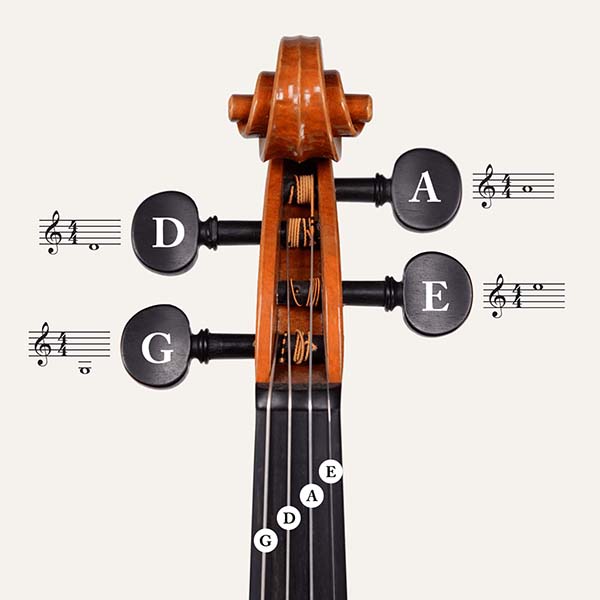Not everyone knows what the expression ”open seam” means. Not even some professional musicians. We once had a local customer borrow an expensive violin for an in-home trial. When he returned to Fiddlershop, the violin was very warm upon opening the case. It turned out that the customer had just eaten lunch at a nearby restaurant and had left the instrument in his car. Since we are located in Florida, with year round sunshine, this is a big no-no. Our luthier, who inspected the instrument, immediately noticed an open seam as a result. The instrument now had to be repaired.
We asked Fiddlershop’s artistic director and violinist Joseph Adkins to tell us all he knows about open seams:
What is an open seam exactly?
An open seam is when the top or back of a violin, viola, cello or bass comes unglued from the sides. The violin is made of many pieces of wood glued together, around 31 pieces!

A visible gap between top and side of a cello.
Why don’t the makers use a better glue, such as wood glue?
Hide glue has been used for centuries in instrument making, and it is a very strong and durable glue. At the same time, hide glue can be reversed with moisture and heat. This allows luthiers to remove and repair parts of the instrument. Wood glue is not reversable, and if used then future repairs could be very difficult or impossible.
If a violin has a crack in the top, it can be disassembled and repaired, including adding reinforcements that prevent the crack from opening. Simply squeezing glue into the crack will not fix anything, and wood glue can make it worse!
How common is it to get an open seam? Does it happen on every instrument?
Open seams are fairly common, but not every instrument will experience them. Excessive heat, humidity, or bumps can encourage a seam to come unglued. Additionally, wood can expand and contract, subtly changing shape due to time and changes in climate. When this happens, the wood is put under tension, which can cause a seam to pop open. If the seam didn't pop open, the wood might crack!
Where are some common places where a seam can open up?
You can commonly find open seams where the player touches the instrument. This includes the upper treble bout for violin/viola/cello, and the lower bout of a violin where the violin touches the neck. Still, open seams are possible anywhere along the glued edges of the instrument.
How can I tell that the instrument has an open seam?
Some open seams can be easily spotted, while other smaller ones can go unnoticed. Players might notice a change in the sound of their instrument; a lack of resonance, less power, or even a buzzing or rattling sound. Sometimes it has no effect at all on the sound. Having a luthier check your instrument yearly is a good way to stay on top of minor repairs like this.
There are a few tricks to checking for an opening, such as lightly knocking on the suspected area which produces a thin tapping sound. The corner of a piece of paper will easily slide into an open seam. Also, shining light into an instrument can reveal an opening from the outside.
 Testing for an open seam with paper.
Testing for an open seam with paper.
What can I do to avoid this from happening?
Open seams are sometimes unavoidable, but proper care and maintenance can reduce the chances of an open seam. Try to avoid prolonged exposure to heat and humidity, as well as bumping the instrument against hard surfaces.
How expensive is it to fix an open seam?
Open seams are no challenge for a skilled luthier. Our workshop will usually evaluate an instrument and give an estimate of how much time is involved. Usually anywhere from $50-$100, depending on the size of the opening. Cello repairs can be more costly!

Closing the seam with glue & clamps.
Other things to consider:
The fingerboard, nut, and saddle are also glued in place, and over time these pieces can come loose as well, which is better than the wood breaking!





